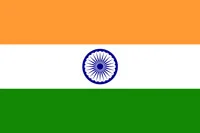Seaweed Market Size, Share, Trends, Growth, and Industry Analysis, By Environment (Aquaculture, Wild Harvest), Product (Red, Brown, Green), Application (Processed Foods, Direct Human Consumption, Hydrocolloids, Fertilizers, Animal Feed Additives, and Others), Regional Analysis and Forecast 2033
STUDY PERIOD: 2019-2032
BASE YEAR: 2023
HISTORICAL DATA: 2019-2022
Global Seaweed Market size was USD 6.27 billion in 2024 and the market is projected to touch USD 10.55 billion by 2033, at a CAGR of 6.72% during the forecast period.
Seaweed is nutrient rich and contains various vitamins, minerals, and antioxidants, and it is therefore of high value in food industries as well as many natural health products. Its use extends into agriculture products, pharmaceuticals, and even a source of renewable energy.
Increased applications in various sectors, especially in Asia, which have been consuming seaweed over the past centuries as part of their diets, result in the steady growth of seaweed markets. Recent years also placed it in other parts of the globe due to increased interest for healthier and more sustainable food options. Other seaweed-based products are snack foods, plant-based food alternatives, and as a natural thickener in the food processing industry. Environmental concerns and the drive for sustainability have upped the demand for seaweed as this is a renewable resource that consumes less land and water compared to land-based crops. The sector is then expected to continue its surge in the global seaweed market by continued innovations in applying it and growing consumer demand for natural, sustainable products.
Seaweed Report Scope and Segmentation.
|
Report Attribute |
Details |
|
Estimated Market Value (2024) |
USD 6.27 Billion |
|
Projected Market Value (2033) |
USD 10.55 Billion |
|
Base Year |
2024 |
|
Historical Year |
2018-2024 |
|
Forecast Years |
2024 – 2033 |
|
Scope of the Report |
Historical and Forecast Trends, Industry Drivers and Constraints, Historical and Forecast Market Analysis by Segment- Based on By Environment, By Product, By Application, & Region. |
|
Segments Covered |
By Environment, By Product, By Application, & By Region. |
|
Forecast Units |
Value (USD Million or Billion), and Volume (Units) |
|
Quantitative Units |
Revenue in USD million/billion and CAGR from 2024 to 2033. |
|
Regions Covered |
North America, Europe, Asia Pacific, Latin America, and Middle East & Africa. |
|
Countries Covered |
U.S., Canada, Mexico, U.K., Germany, France, Italy, Spain, China, India, Japan, South Korea, Brazil, Argentina, GCC Countries, and South Africa, among others. |
|
Report Coverage |
Market growth drivers, restraints, opportunities, Porter’s five forces analysis, PEST analysis, value chain analysis, regulatory landscape, market attractiveness analysis by segments and region, company market share analysis. |
|
Delivery Format |
Delivered as an attached PDF and Excel through email, according to the purchase option. |
Dynamic Insights
With increasing consciousness about the environmental consequence of conventional agriculture, many think that seaweed farming will be done on less land with minimal amounts of water and fertilizers, thereby being a more environment-friendly activity. This aspect is attracting more people and companies wanting to find environment-friendly alternatives for their product portfolios. Seaweed is a highly nutritional component with a rich content of vitamins, minerals, and antioxidants, which makes it a very excellent and sought-after choice in food and wellness-related sectors.
Advances in seaweed farming techniques on the supply side have improved how better and more efficiently and sustainably it can be grown and harvested. However, the low awareness level in markets conceived to be traditional outside of the Western regions where seaweed is not a staple food is going to pose another challenge to the market. Apart from the changes in climate and pollution in oceans, there are factors that affect the production of seaweeds, thus some fluctuations in supply are expected. Market growth is anticipated due to innovation in the range of products available, including such trends as seaweed-based snacks and cosmetics, an increasing consumer preference for natural, and healthy-conscious. Finally, a growing demand for ingredients produced by seaweed in pharmaceuticals and biofuels drives expansion in this market.
Drivers Insights
- Growing Demand for Sustainable and Plant-Based Foods
The trend is changing toward sustainable and plant-based food products, especially among health-conscious and environmentally conscious consumers. Seaweed, which contains essential nutrients like fiber, vitamins, and minerals, has become increasingly popular, with a rising intake of these foods for health benefits. Plant-based diets are currently in vogue, and vegan and vegetarian food products are sprouting in popularity, so there will be an increase in products made from seaweed. In addition, seaweed is a very sustainable source since it does not need much water, land, and pesticides compared to other crops. With consumers now more concerned about sustainability, there are increasing trends of seaweed's versatility as an eco-friendly ingredient, which is leading to its increasing demand in the food, beverage, and cosmetics industries.
- Health Benefits and Nutritional Value
Seaweed is a rich source of essential nutrients: iodine, antioxidants, omega-3 fatty acids, and minerals, which contribute to good digestive health, immune function, and skin health. This makes the recent expansion of its application in the wellness sector all the more consumer-driven by demand for natural, nutrient-dense products. As the research continues to underscore the benefits of health derived from seaweed, it comes into the daily diet through the channels of snacks, supplements, and beverages. This trend, thereafter, acts as a catalyst for the market as even more people begin looking towards plant-based and clean-label products promising greater wellness and nutrition.
Restraints Insights
- Limited Consumer Awareness in Non-Traditional Markets
On the other hand, seaweed consumption remains relatively low in the Western countries though it is highly consumed in Asian countries like Japan, Korea and China. Most of the consumers in the non-traditional markets have little knowledge about the seaweed and the benefit of its consumption. Companies are required to venture into these regions breaking the knowledge gap with high hopes and optimism. Though plant-based diets are changing rapidly, unfamiliarness and perception of taste remain major barriers to spread seaweed. There should be educative programs that encourage marketing strategies to sensitize and convince consumers to take seaweed as part of their diets.
- Environmental Challenges and Supply Chain Disruptions
Seaweed productions rely heavily on marine ecosystems that are particularly sensitive to climate change and pollution of the ocean. Climatic changes including high ocean temperatures, acidification, and pollution will have adverse effects on seaweed growth or yield harvest, which leads to irregular supply. This environmental problem becomes a significant threat to seaweed producers, which might lead to price volatility and reduced availability. In addition, natural disasters and ocean deterioration may damage the supply chain, thereby making it difficult to continuously produce quality seaweed.
Opportunities Insights
- Innovation in Product Development
A growing opportunity for product innovation in the seaweed market is emerging as companies look for new ways to include seaweed in a myriad of food products-from seaweed-based snack foods, plant-based alternatives, and ready-to-eat meals, to specific applications related to cosmetics, personal care, and pharmaceuticals. This means that generating functional foods with added health benefits -such as fortified seaweed snacking or supplements-would largely open their market avenue. There is a huge opportunity for brands to capitalize on the increasing demand for seaweed-based products with consumer preferences shifting toward natural, nutrient-dense foods.
Segment Analysis
- By Environment:
The market for seaweed is primarily segmented based on the type of environment where seaweed is cultivated: aquaculture and wild harvest. Aquaculture, or farmed seaweed, refers to the cultivation of seaweed in a controlled environment such as alongside the coastline, using a technique like ropes, nets, or tanks to raise the algae. This harvesting method has additional benefits such as safe harvest cycles, a more sustainable process, and scalable production. This is wild harvest, which involves the collection of seaweed directly from natural marine ecosystems where the seaweed grows naturally. Wild harvest is also generally more climatically dependent and can be strongly influenced by tides and marine conditions. Aquaculture and wild harvest have different advantages and challenges, but together they greatly contribute to the supply and diversity of seaweed products on the market.
- By Product:
Seaweed products can be broadly categorized into three categories based on the color: Red, Brown, and Green. In comparison to other seaweeds, red seaweeds are protein-rich with applications in food, cosmetics, and hydrocolloid. Brown seaweeds contain polysaccharides, more particularly alginate that acts both as a thickener and gelling agent with some industrial application within the food area as well as many application areas. It is also rich in minerals, iodine, and other minerals. Green seaweed is generally rich in chlorophyll and is sold in supplements, as a food additive, and as an organic fertilizer. This variety of seaweed provides different nutrients and can be used for different applications, and its market presence is mainly dependent on the unique properties that each color variant provides for the different industries involved.
- By Application:
The application also categorizes the seaweed market into processed foods, direct human consumption, hydrocolloids, fertilizers, animal feed additives, and others. The biggest segment by far is processed foods, where seaweed is an ingredient in snacks, soups, sushi, and beverages on account of its nutritional values as well as its functional properties like thickening and flavor enhancement. Direct human consumption: a form wherein either fresh or dried seaweed is consumed in its natural form, often used in Asian cuisine but increasingly being adopted to the west as healthy, plant-based food source; hydrocolloids: from seaweed, added to food as thickeners, stabilizers, and gelling agents; and fertilizers made from seaweed are highly valued because they happen to be natural growth promoters, which is a sustainable approach to agriculture. Animal feed additives use seaweed as a natural source of vitamins and minerals, promoting the health and growth of the animals.
Regional Analysis
The Asia-Pacific region has the highest market for seaweed. This is one of the high-value producing and consuming areas. Consumers in countries such as China, Japan, and South Korea have been indulging in its consumption for a long period due to history in foodstuffs such as sushi, soups, and snacks. Seaweed farming provides an added benefit where this area houses large-scale aquaculture in countries like China and Indonesia. Increasing health-conscious consumers alongside a preference for sustainable, plant-based ingredients will further build demand in this region for seaweed, according to the report, which cites prospects in the food, pharmaceutical, and cosmetics sectors.
In the context of North America and Europe, the market for seaweed is increasing rapidly, whereas in comparison with Asia, it has not been long since it has begun to be used in food products. Demand for seaweed-based snacks, supplements, and functional food ingredients is increasing in places where demand for plant-based food and sustainable food is on the rise mainly in the United States. Seaweed is also witnessing interest in Europe, as its application can be used for health and wellness products as well as cosmetics and biofuel industries. Seaweed farming and innovation have also seen heavy investment in both regions, which helps drive the market further. As interest in sustainability and eco-friendly products increases on a global level, cultivation of seaweed across other industries will also increase.
Competitive Landscape
Major players in this market include Seaweed & Co., Cargill, Compo Expert, DSM, and Acadian Seaplants, who have a large footprints across all the segments in the seaweed market, like food ingredients, hydrocolloids, and fertilizers. These companies usually adopt a vertical integration mode of operation with both cultivation of seaweed and processing of seaweed-based products, thereby providing them with good supply chain control and product innovation advantages. More and more, companies are focusing on sustainability practices, thus conducting eco-friendly seaweed sourcing while catering to the demands of consumers that are now calling for such transparent, sustainable products.
Regional players, mainly Asian-Pacific players such as Donghai Seaweed Group in China, Algoliner in South Korea, and Marinalg in Spain, lead in producing seaweed, but companies like Nori Green and Ocean Harvest are expanding their presence in new markets. The major strength of competition is innovation as companies invest in development and research into the comprehensive use of seaweed. This brings an advancement of seaweed-based ingredients for plant-based food products, supplements, animal feed, and natural cosmetics. That apart, strategic partnerships, mergers, and acquisitions happen, taking a look at the approach of companies in expanding their market presence and integrating more advanced ways of cultivating and processing.
List of Key Players:
- Mara Seaweed
- Gimme Health Foods LLC
- Chase Organics
- Cargill, Incorporated
- DowDuPont Inc.
- CJ CheilJedang Corp.(Annie Chuns Inc.)
- Irish Seaweeds
- Qingdao Gather Great Ocean Algae Industry Group Co
- Maine Coast Sea Vegetables, Inc.
- Groupe Roullier
Recent Developments:
- In Nov 2024, a €9 million initiative has been launched to promote innovation and strengthen interregional collaboration within the EU's seaweed sector. The I3-4-Seaweed project aims to invest in seaweed innovation across various European regions, bringing together partners from Portugal, Belgium, the Netherlands, Spain, Ireland, and Germany. The project seeks to drive sustainable growth and address regional needs within the blue economy.
- In July 2024, in a major strategic move, Seaweed Enterprises Limited unveiled its new brand, House of Seaweed, marking a key milestone in the company's ambition to become a leading seaweed trade processing hub in Scotland, the UK, and beyond. Having already secured £597k, more than a third of its £1.6m investment goal, this announcement comes alongside ongoing fundraising efforts. A portion of the funds will be allocated towards outfitting a factory, with the aim of establishing the business as the UK’s largest multi-species seaweed processing hub.
Global Seaweed Report Segmentation:
|
ATTRIBUTE |
DETAILS |
|
By Environment |
|
|
By Product |
|
|
By Application |
|
|
By Geography |
|
|
Customization Scope |
|
|
Pricing |
|
Objectives of the Study
The objectives of the study are summarized in 5 stages. They are as mentioned below:
- Global Seaweed size and forecast: To identify and estimate the market size for global Seaweed market segmented By Environment, By Product, By Application, and by region. Also, to understand the consumption/ demand created by consumers between 2024 and 2033.
- Market Landscape and Trends: To identify and infer the drivers, restraints, opportunities, and challenges for global Seaweed
- Market Influencing Factors: To find out the factors which are affecting the market of global Seaweed among consumers.
- Company Profiling: To provide a detailed insight into the major companies operating in the market. The profiling will include the financial health of the company's past 2-3 years with segmental and regional revenue breakup, product offering, recent developments, SWOT analysis, and key strategies.
Frequently Asked Questions
Request For Table of Content
Research Methodology
Multi-report Purchase Plan
A Customized Plan Will be Created Based on the number of reports you wish to purchase
InquireRelated Reports
Client Testimonials
“We value your excellent customer service, promptness in responding, flexibility in customizing reports, and pleasant manner in general. ”
June S. Lee - SBIC/SBP&T Co.,Ltd
“The study and the services provided by Econ Research have more than met my expectations. The study has good depth and breadth and was reasonably priced. Instant responses to my questions delighted me, and the project went off without a hitch. When I require information about a different industry to help my clients, Econ Research would be the first market research firm I would get in touch with.”
Dan Dybus - AlixPartners


